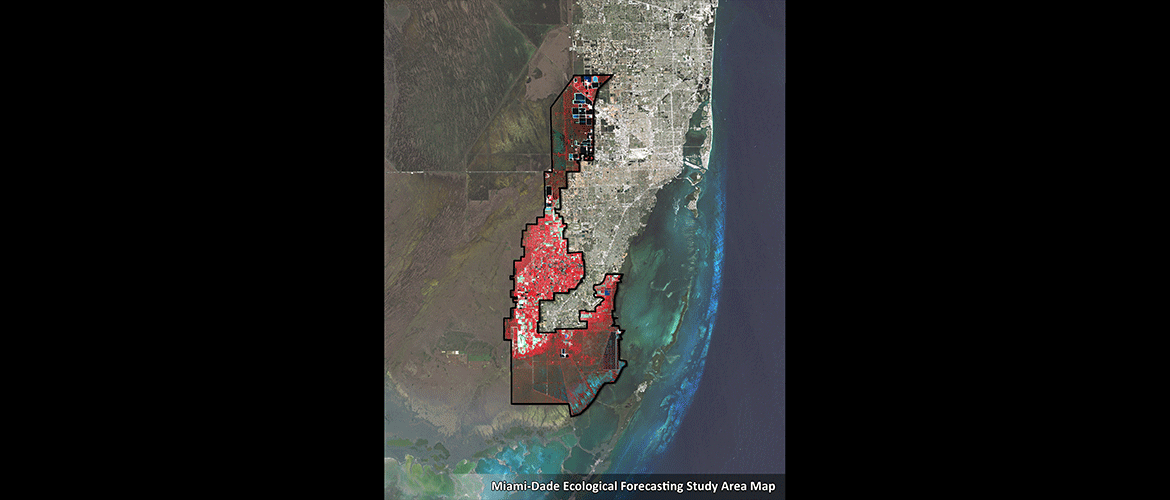Miami-Dade County Ecological Forecasting

"Utilizing NASA Earth Observations to Enhance Corridor Prioritization and Design Plans for the Western Greenway Corridor in Miami-Dade County, South Florida"
Miami is a city of rapid and constant change, some of which is at the expense of its neighboring wetland area, the Everglades. As the largest subtropical ecosystem in the United States, the Everglades is located along avian migratory routes and is home to many endemic plant and animal species. The protection and restoration of this region is critical not only for ecological reasons, but also for the protection of water recharge resources for future urban water consumption by the 2.5 million residents of Miami-Dade County. The Miami-Dade County Parks, Recreation and Open Spaces Department (MDC-PROS) has embarked on an ambitious planning effort in partnership with The Trust for Public Land to develop a Western Greenway system of trails and recreational destinations along the county’s western edge.
To assist Greenway planning efforts, this project used NASA satellite imagery to derive a vegetation index which served as an input of land cover for the Land-Use Conflict Identification Strategy (LUCIS) model. Additional land use information from a Miami-Dade County 2013 Land Use Management Application (LUMA) data set provided details for the model on current urban development. Conclusions drawn from the LUCIS model identified the most suitable land for recreation, conservation, and production. This project contributes to decision support tools of MDC-PROS and The Trust for Public Land for planning green infrastructure corridors preserving the Everglades.
- Location
- University of Georgia
- Term
- Spring 2014
- Partner(s)
- Trust for Public Land
Miami-Dade County Parks, Recreation and Open Spaces Department - NASA Earth Observations
- Landsat 5 TM
- Team
- Ning Chen (lead)
Ike Astuti
Becky Lynn
Caren Remillard - Advisor(s)
- Dr. Sergio Bernardes (Department of Geography, University of Georgia)
Dr. Marguerite Madden (Department of Geography, University of Georgia)
Steve Padgett-Vasquez (Department of Geography, University of Georgia)
Dr. Rosanna G. Rivero (College of Environment and Design, University of Georgia)
Project Video